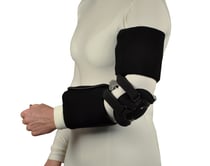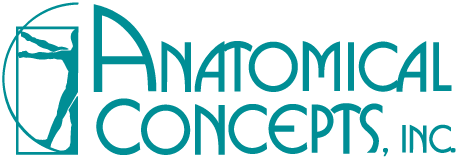![[ACI]-November-Blog-Graphic-v1](https://www.anatomicalconceptsinc.com/hs-fs/hubfs/%5BACI%5D-November-Blog-Graphic-v1.jpg?width=1200&name=%5BACI%5D-November-Blog-Graphic-v1.jpg)
Elbow injuries can be one of the most disruptive upper body ailments because the joint serves many essential functions necessary for your patients’ everyday lives.
Because the elbow joint allows for hand movement toward and away from the body, rotation of the forearm, and flexion and extension of the arm (bending and straightening the elbow), an injury significantly impacts daily functionality.
Many things can cause elbow pain. A common cause is tendinitis, inflammation of the tendons that attach muscle to bone. Tendinitis of the elbow is known as a common sports injury, often from playing tennis or golf. It can also result from overuse of the elbow.
Other common causes of elbow pain include sprains and strains, fractures (broken bones), dislocations, bursitis, and arthritis.
Elbow contractures
Beyond typical elbow injuries, elbow contractures (stiff elbow) cause pain and limit elbow bending. The pain may affect your patients’ ability to perform daily activities such as getting dressed, driving, or using a keyboard. Pain and loss of motion are the most common symptoms of a stiff elbow.
The typical functional range of motion for an elbow is 30 to 145 degrees. A contracted elbow is often diagnosed when the ability to extend or flex the arm is lessened by at least 30 degrees. Flexion contractures greater than 45 degrees will affect the patients’ ability to perform activities of daily living.
Some causes and risk factors linked to elbow contracture include:
- Elbow trauma
- Elbow surgery
- Osteoarthritis
- Rheumatoid arthritis
- Bone spurs
- Malunions of fractures
- Joint infection
Treatment options
Surgical and non-surgical treatment options for elbow contractures vary, but the goal is the same - provide patients with a device to ensure a pain-free, functional and stable elbow.
One successful treatment we recommend for your patients is the use of custom-made or “off-the-shelf” elbow orthoses. We work with physicians and therapists to help develop a comprehensive treatment plan that includes the selection of the correct orthosis for each patient.
An elbow orthosis can be designed to increase the elbow range of motion by static or dynamic means. A static brace needs adjusted at specific intervals as the tissues of the arm relax due to the corrective effect. A dynamic brace applies a continuous corrective stretch as the tissues relax and the elbow gradually extends over time.
Determining the appropriate type of elbow orthosis involves asking the right questions based on the extent of your patient’s injuries, goals, and other factors. These considerations include:
- How does the orthosis interface with the tissues? Can it provide the necessary force while remaining comfortable for the patient? The orthosis must be tolerable to the patient to treat the injury successfully.
- How long must the patient wear the device? Will it be only a few hours each day or all day and night?
- How easy is the elbow orthosis to get on and off? Does the brace pinch or impinge on the tissues? Does the brace damage clothing?
- Who will adjust the orthosis, and how often?
Answers to these questions will heavily influence the type and design of the elbow orthosis for your patient. Elbow contractures can worsen quickly, so choosing the proper orthosis sooner rather than later is recommended.
Our Solutions
When working with physicians and patients, we recommend our EMO™ Elbow Orthosis, which offers a unique, yet simple design with its dorsal-fitting single-jointed frame. It creates a more low-profile, non-bulky option for optimal support and increased compliance for your patients.
The quality and functionality of the design include: 
- A wrap-around liner closure with open-cell material
- Static-progressive range of motion positioning for 0 degrees to 110 degrees
- An adjustable fulcrum-point elbow pad and system that allows for total length adjustments between 10.25 inches to 12.25 inches
The EMO™ is a more cost-effective alternative to custom or the more common multi-jointed options currently on the market.
We also commonly recommend our Ratchet and Variable ROM Joint System (QUAD™) elbow orthosis.
This device has a low-profile design for an easy, fast fit on the patient. The new wrap-around closure and single dorsal upright eliminate boney impingement common with other traditional elbow systems.
We’ve heard that patients appreciate the decreased fitting times and infinite ROM positioning between 0 degrees to 110 degrees these devices provide. The QUAD™ elbow orthosis joint offers four functional variations (Ratchet, Lockout, Variable ROM, and Free-motion) that can help address numerous patient needs.
Elbow functionality has a significant impact on everyday life. You must help your patients explore all available treatment options, especially those that offer minimal interruption to their lives and speed the recovery process.
 330-757-3569
330-757-3569





